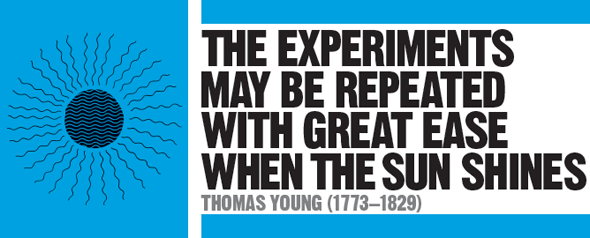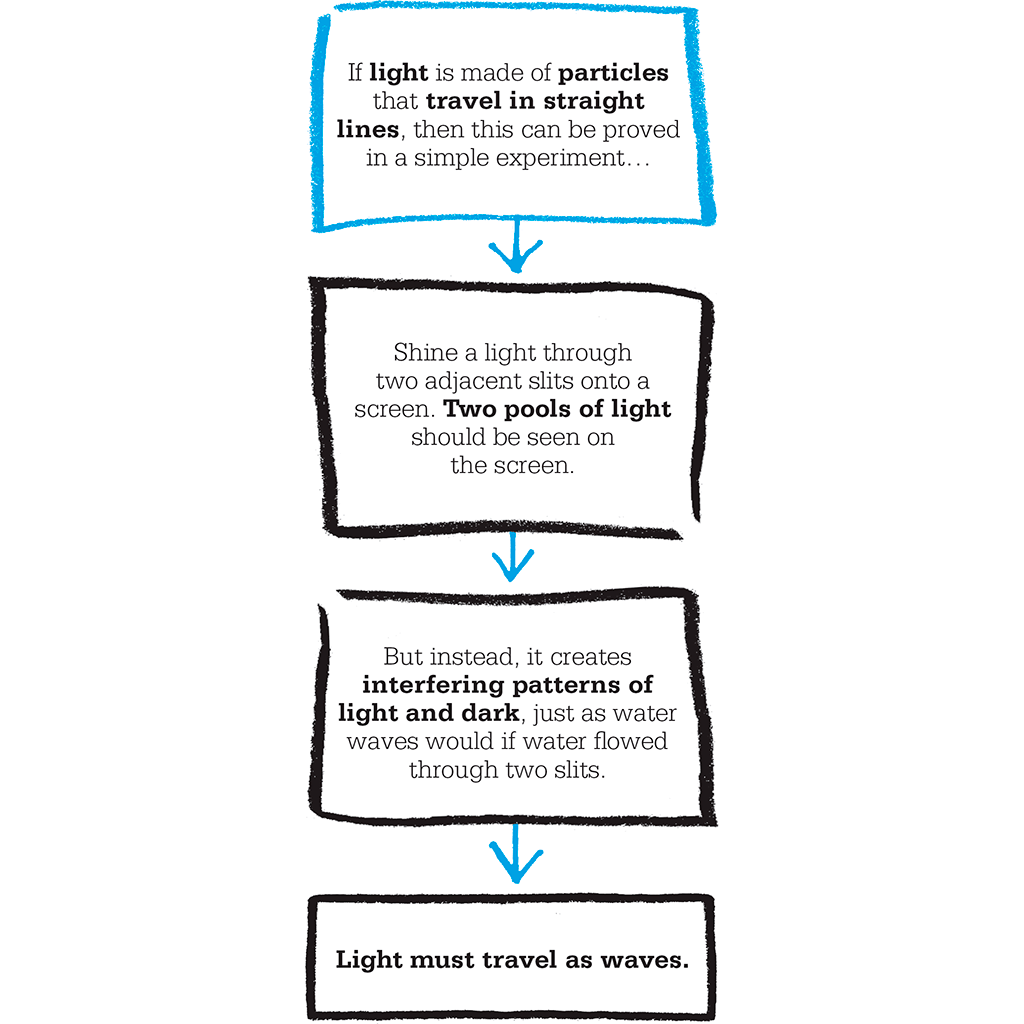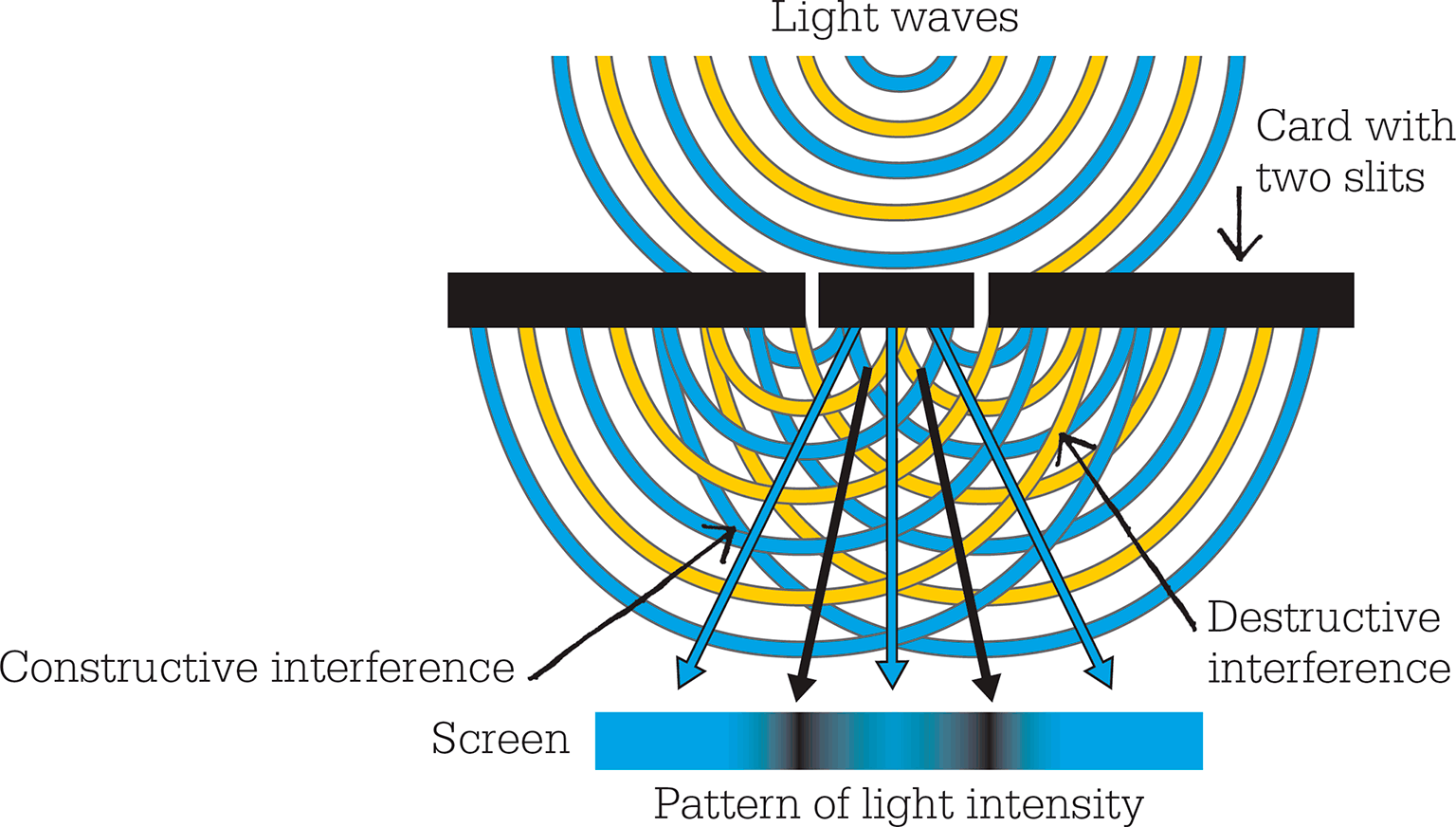
IN CONTEXT
Physics
1678 Christiaan Huygens first proposes that light travels as waves. He publishes his Treatise on Light in 1690.
1704 In his book Opticks, Isaac Newton suggests that light comprises streams of particles, or “corpuscles”.
1905 Albert Einstein argues that light must be thought of as particles, later called photons, as well as waves.
1916 US physicist Robert Andrews Millikan proves Einstein correct through experiment.
1961 Claus Jönsson repeats Young’s double-slit experiment with electrons, and shows that, like light, they can behave as waves as well as particles.
At the turn of the 19th century, scientific opinion was divided over the question of the nature of light. Isaac Newton had argued that a beam of light is made of countless, tiny, fast-moving “corpuscles” (particles). If light consists of these bullet-like corpuscles, he said, this would explain why light travels in straight lines and casts shadows.
But Newton’s corpuscles did not explain why light refracts (bends when it enters glass) or splits into the colours of the rainbow – also an effect of refraction. Christiaan Huygens had argued that light comprises not particles, but waves. If light travels as waves, Huygens said, it is easy to explain these effects. However, Newton’s stature was such that most scientists backed the particle theory.
Then, in 1801, British physician and physicist Thomas Young hit on a design for a simple yet ingenious experiment that would, he believed, settle the question one way or the other. The idea began when Young was looking at the patterns of light made by a candle shining through a mist of fine water droplets. The pattern showed coloured rings around a bright centre, and Young wondered if the rings might be caused by interacting waves of light.

The double-slit experiment
Young made two slits in a piece of card and shone a beam of light onto them. On a paper screen placed behind the slits, the light created a pattern that convinced Young that it was waves. If light were streams of particles, as Newton said, there should simply have been a strip of light directly beyond each slit. Instead, Young saw alternating bright and dark bands, like a fuzzy bar code. He argued that as light waves spread out beyond the slits, they interact. If two waves ripple up (peak) or down (trough) at the same time, they make a wave twice as big (constructive interference) – creating the bright bands. If one wave ripples up as the other ripples down, they cancel each other out (destructive interference) – creating the dark bands. Young also showed that different colours of light create different interference patterns. This demonstrated that the colour of light depends on its wavelength. For a century, Young’s double-slit experiment convinced scientists that light is a wave, not a particle. Then in 1905, Albert Einstein showed that light also behaves as if it were a stream of particles – it can behave like a wave and a particle. Such was the simplicity of Young’s experiment that, in 1961, German physicist Claus Jönsson used it to show that the subatomic particles electrons produce similar interference, so that they, too, must also be waves.

Here, light travels through two slits in a piece of card, and reaches a screen. The light waves passing through the slits interfere. Where peaks (yellow) intersect with troughs (blue), there is destructive interference. Where peaks intersect with peaks and troughs with troughs, there is constructive interference.
"Scientific investigations are a sort of warfare carried on against all one’s contemporaries and predecessors."
Thomas Young
THOMAS YOUNG

The eldest of 10 children raised by Quaker parents in Somerset, England, Thomas Young’s brilliant mind made him a child prodigy, and he was nicknamed the “Young Phenomenon”. At 13, he could read five languages fluently – as an adult, he made the first modern translation of Egyptian hieroglyphics.
After medical training in Scotland, Young set up as a physician in London in 1799, but he was a true polymath who, in his spare time, conducted enquiries into everything from a theory of musical tuning to linguistics. He is most famous, however, for his work on light. As well as establishing the principle of interference of light, he devised the first modern scientific theory of colour vision, arguing that we see colours as varying proportions of the three main colours: blue, red, and green.
Key works
1804 Experiments and Calculations Relative to Physical Optics
1807 Course of Lectures on Natural Philosophy and the Mechanical Arts
See also: Christiaan Huygens • Isaac Newton • Léon Foucault • Albert Einstein